Metzeler Sportec M9 RR Tire Review

A fitting followup to the popular M7 RR
Since its introduction in 2015, the Sportec M7 RR tire has been a popular seller for Metzeler and continues to sell well to this day. So, why fix it? Well, while we may think that the advent of motorcycle electronics has been growing quickly, the arena of tire performance has also been undergoing seemingly exponential change, and a five-year-old tire runs the risk of being left behind in the marketplace. Enter the Metzeler Sportec M9 RR, a tire designed to capitalize on all the M7 RR’s strengths and then exceed them. Does Metzeler, the only tire manufacturer to exclusively produce motorcycle tires, have another hit on its hands? Let’s take a look.
Compounding the issue
The secret mixture of a tire’s rubber compound(s) has always been the black magic behind motorcycle tires. The few square inches that contact the road at any given time have to provide cornering grip in a variety of temperatures, channel away water when it rains, and do so without compromising the steering characteristics of the bike they are mounted on. In the last decade or so, we may have grown complacent with how good motorcycle tires have gotten. Gone are the days where higher mileage tires both wore and gripped like stone or provided exceptional traction with shockingly low mileage. And how many riders long for the day where their bikes wanted to stand up and run wide if we needed to apply the brakes mid-corner?
So, what has this motorcycle tire revolution brought to the M9 RR? We’ll start from the outside and work our way in. For starters, the compound is now full silica over the entire tread. Full silica compounds have previously been used because of their quick warm-up and chemical grip when the weather turns wet. In the past, the key shortcoming of high silica compounds was that they didn’t hold up well to high temperatures – like those generated at the track. This update is the result of Metzeler’s Compound Continuous Mixing, which blends the resins used with the silica so thoroughly that the final mixture is stable enough to withstand a significantly wider range of heat.
Next, both the front and rear M9 RRs receive dual-compound construction, with the center section being a harder, more wear-resistant one and the outer edges softer and grippier – though both are still full silica. This dual-compound front tire construction puts it in the company of tires like the Michelin Power RS and the Bridgestone Battlax Hypersport S22. Regardless, Metzeler claims that the shoulder compound is derived from rain racing. Even with the dual-compound construction, the rear tire’s use of dual compounds is different from the front’s. Where the front soft compound goes all the way through to the tire’s carcass, the rear utilizes what Metzeler calls a “cap and base” construction, with the soft edge compound laid over the harder compound used for the center. This construction assists the rear tire’s side compounds in maintaining their thermal stability under loads caused by acceleration.
Getting your groove on
The compounds utilized aren’t the only changes made to the M9 RRs where the rubber meets the road. The grooving retains the distinctive Pi design of the M7 RR. Metzeler claims this design assists in quick warmup in addition to its water dispersion duties. On top of that, the M9 RRs now benefit from the central claw grooves associated with the Racetec RR and its development on famed road courses such as the Isle of Man TT and the North West 200. This structure plays an important role in straight-line stability while still promoting water evacuation. The grooving, however, all but disappears after the tire is leaned over 30°, which is the lean angle that Metzeler feels is about as far as riders will go in the wet. The remaining section of the tread is essentially a slick tire all the way to its shoulder, promoting cornering grip when cranked over on dry pavement. When all is said and done, Metzeler claims an average of 5% increase in the “effective footprint” area over the arc of the tire profile. Naturally, much of that comes in the slick section at the shoulder. Surprisingly, the center section has more grooving than the M7 RR.
The interior of the M9 RR receives its own updates. The rayon cords are 6% stiffer, but they are spaced further apart in the carcass. The spaces between the cords are filled with the rubber compound, which Metzeler claims improves the damping capabilities of the tires while still offering improved responsiveness.
The Spanish proving grounds
To give us a chance to test the M9 RR’s mettle, Metzeler took the world moto-press to the meandering roads around Ronda, Spain, which also happens to be the home of the Circuito Ascari, a privately-owned motorsports playground. Where the street ride would give us the real-world experience of the new Sportec, the curvaceous Ascari would let us test the tires at their limits with three dry sessions and one wet.
The chilly morning temperatures in the low 50s F were an ideal proving ground for the M9 RRs to show how quickly they come up to a usable temperature. Within a mile-or-so, I felt comfortable bending the MT-07 I had for the street ride into the corners without concern. As the pace hotted up and the ambient temperature climbed, I never gave grip a second thought. Instead, what I marveled over was how much like the M7 RRs the M9 RRs were – and that’s a good thing.
What I liked the most about the M7 RR tires was their neutral steering, and the M9 RRs had that in spades. I had precise control of where I went in a corner, with no tendency to fall into the corner at the entry or stand up should I apply the brakes mid-bend. Changing lines was as simple as dialing in the desired amount of lean. We traveled over pavement that ranged from putting-green smooth to rough and broken. In that time, the M9 RRs never put a contact patch out of place. (I feel the need to note that a couple of journos said they had slips on one particularly dirty section of pavement, but I had no such experience. Perhaps because I saw the dirt and thought it was prudent to slow down.)
Moving to the track was more of the same – only this time I rode three different bikes. My first mount was a BMW S1000XR. My second was a KTM 790 Duke, which I chose for my familiarity with how it handles with different tires, and my third was a BMW S1000R. With all three bikes, the M9 RRs remain neutral steering, allowing quick, predictable turn-in. The change to the XR is particularly impressive with a light, easy turn-in that belies its tall stance and high center of gravity. When riding the 790 Duke, the steering is just as responsive as it arrived from the factory. I’ve sampled tires on it that slowed the steering down (Michelin Power RS) and quickened it slightly (Pirelli Diablo Supercorsa SP). The M9 RR is the Goldilocks tire in terms of being just right.
When leaned over, the grip is predictable and quite good for a street-focused tire. I wouldn’t hesitate to use these tires on a personal track day. One long right-hand sweeper leads onto Ascari’s front straight, and when cranking through it with the throttle pinned, TC flashing on the dash, I couldn’t believe how stable the tires were on their edges. When the M9 RRs reached their limit, they let the rider know without drama. I credit both the tires and TC for this.
Unfortunately, the wet session was cut short by a crash – not on the wet section but on the dry. (A rider accidentally clipped a curb at low speed with a wet tire and was unceremoniously dumped onto the pavement. This was no fault of the tire.) So, I only got three laps on the wet course and was really only about a third of the way up to the speed I would have eventually reached in a full 20-minute session. What little I gleaned from this short exposure is that the tires felt at least as good as the M7 RRs, which I spent a day riding on the track in the rain at Almeria. If the M9 RRs are better than the quite good M7 RRs, that will be impressive, but other riders will have to test this capability.
Now, we wait
While oenophiles may love their wine, for me, nothing compares to curvaceous tarmac, a motorcycle, and a set of grippy tires. I could sample them endlessly. The Metzeler Sportec M9 RR tires are a fine example of the sporting breed. If Metzeler’s claims of increased longevity prove to be true, the German manufacturer has created a worthy replacement for the popular M7 RR, which is no easy task. My short time with the Metzeler Sportec M9 RR tires leads me to believe that their capabilities puts them in the top tier of street-focused sporting tires, with competitors like the Bridgestone Battlax Hypersport S22, Dunlop Sportmax Q3+, and the Michelin Power RS. That’s good company to keep.
Sportec M9 RR Tire Specifications | ||
|---|---|---|
Axle | Size | Availability |
Front | 110/70 R 17 M/C 54H TL | Q3 2020 |
| 110/70 ZR 17 M/C 54W TL | Now | |
| 120/70 ZR 17 M/C (58W) TL | Now | |
Rear | 140/70 R 17 M/C 66H TL | Q3 2020 |
| 150/60 R 17 M/C 66H TL | Q3 2020 | |
| 150/60 ZR 17 M/C 66W TL | Now | |
| 160/60 ZR 17 M/C (69W) TL | Now | |
| 180/55 ZR 17 M/C (73W) TL | Now | |
| 180/60 ZR 17 M/C (75W) TL | Now | |
| 190/50 ZR 17 M/C (73W) TL | Now | |
| 190/55 ZR 17 M/C (75W) TL | Now | |
| 200/55 ZR 17 M/C (78W) TL | Now | |
As of publication, pricing and availability have not been set, but that said, these are 2020 tires. So, with the exception of a couple of sizes slated for Q3 2020, we’d expect them in time for the beginning of the riding season. If you’re a fan of the M7 RRs or have been tempted to try them in the past, you owe it to yourself to sample a set of Metzeler Sportec M9 RR tires this season. You won’t be disappointed.
We are committed to finding, researching, and recommending the best products. We earn commissions from purchases you make using the retail links in our product reviews. Learn more about how this works.

Like most of the best happenings in his life, Evans stumbled into his motojournalism career. While on his way to a planned life in academia, he applied for a job at a motorcycle magazine, thinking he’d get the opportunity to write some freelance articles. Instead, he was offered a full-time job in which he discovered he could actually get paid to ride other people’s motorcycles – and he’s never looked back. Over the 25 years he’s been in the motorcycle industry, Evans has written two books, 101 Sportbike Performance Projects and How to Modify Your Metric Cruiser, and has ridden just about every production motorcycle manufactured. Evans has a deep love of motorcycles and believes they are a force for good in the world.
More by Evans Brasfield









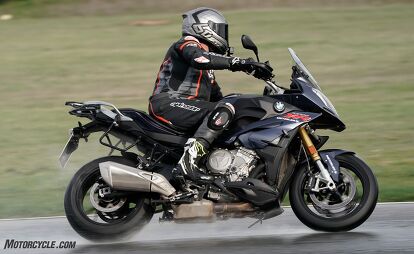







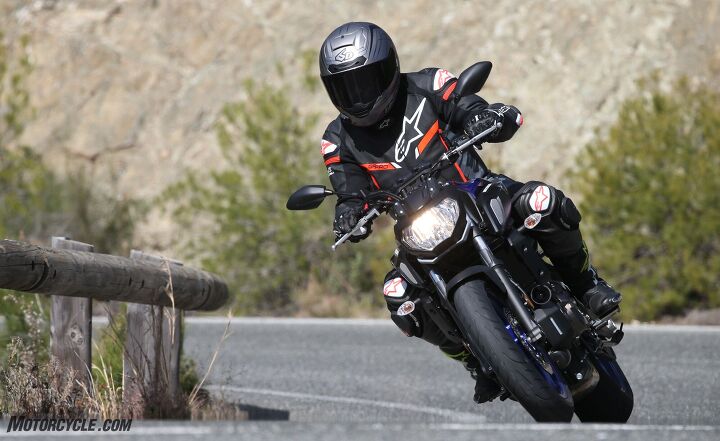















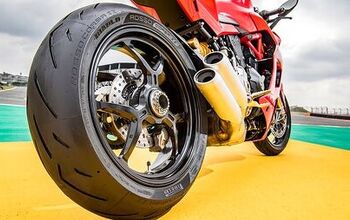








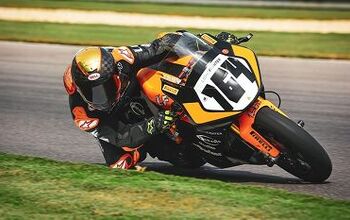


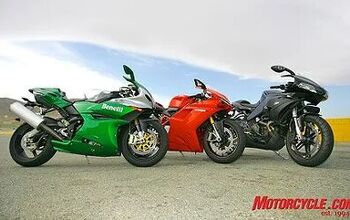



Comments
Join the conversation
Metzeler is owned by China.
So, would you buy these or the Bridgestone S22's? I can get the Stones for about $100 less for the pair.